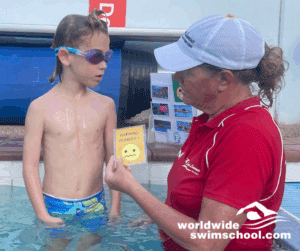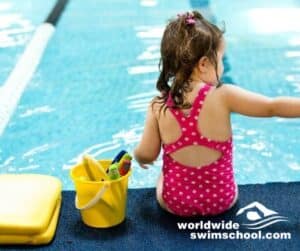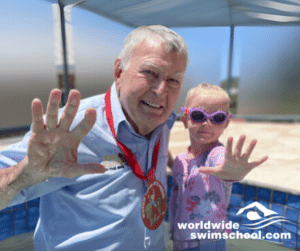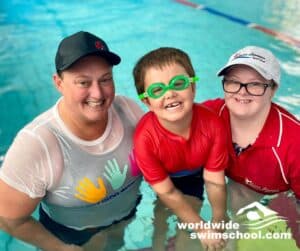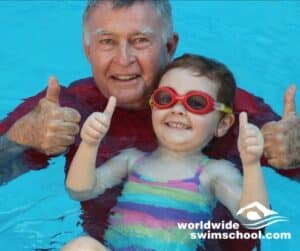Babies spend the first nine months of their life in the womb. In here, they're surrounded by water and other warm liquids. Therefore, it's only natural for them to be introduced to water at a young age. Therefore, it is best to condition babies before their introduction to the pool. Not only is it an important safety lesson that can save your baby's life, but it's also enjoyable for the child. If done properly, your child will never be scared of the water.
Pouring Water on Baby's Head
When we condition babies, we start by pouring water on the baby's forehead. This can be done as early as they come home from the hospital. We use verbal trigger words to teach the baby to hold their breath. When done properly, the baby will learn how to control their breathing in the water. Our mission is to make the swimming experience for the baby as happy and trauma-free as possible. We continue to condition the baby until they're between 9 and 12 months old. It's typically this age when they're ready to be submerged in the water totally for five seconds.
Underwater 5-second Rule
When the baby is responding to verbal triggers to hold their breath, it's time to introduce them to the water. This is a great activity that can be done in the bathtub before introducing them to a pool. Here they can practice how long to hold their breath. Once the baby can hold its breath during longer water pours, it's time to introduce them to the underwater five-second count.
Key points that your baby is ready for this include the following
- Start training the baby as soon as they come home from the hospital
- Teach baby to hold their breath on command
- Teach babies to hold their breath during long water pours
- Use consistent verbal triggers that the baby will pick up on
- Never leave the child unattended in the tub or other pools of water, no matter how shallow.
If done properly, the babies first underwater experience should be as stress-free as possible and it should be enjoyable.
Introducing Baby to the Pool
Once all these steps have been accomplished, you can introduce your baby to the pool or a large body of water.
Here, they will learn to hold their breath for five seconds underwater. If at any point the baby ingests water, the training stops completely.
Warning Never leave your baby unattended near water, no matter how shallow it is. This method is to slowly teach babies how to swim without being traumatized in the process.
If left unattended before the baby is ready to swim, they run the risk of drowning.
To find out more information about our Swim Library, click here.
To read more on this topic, read our blog here.

